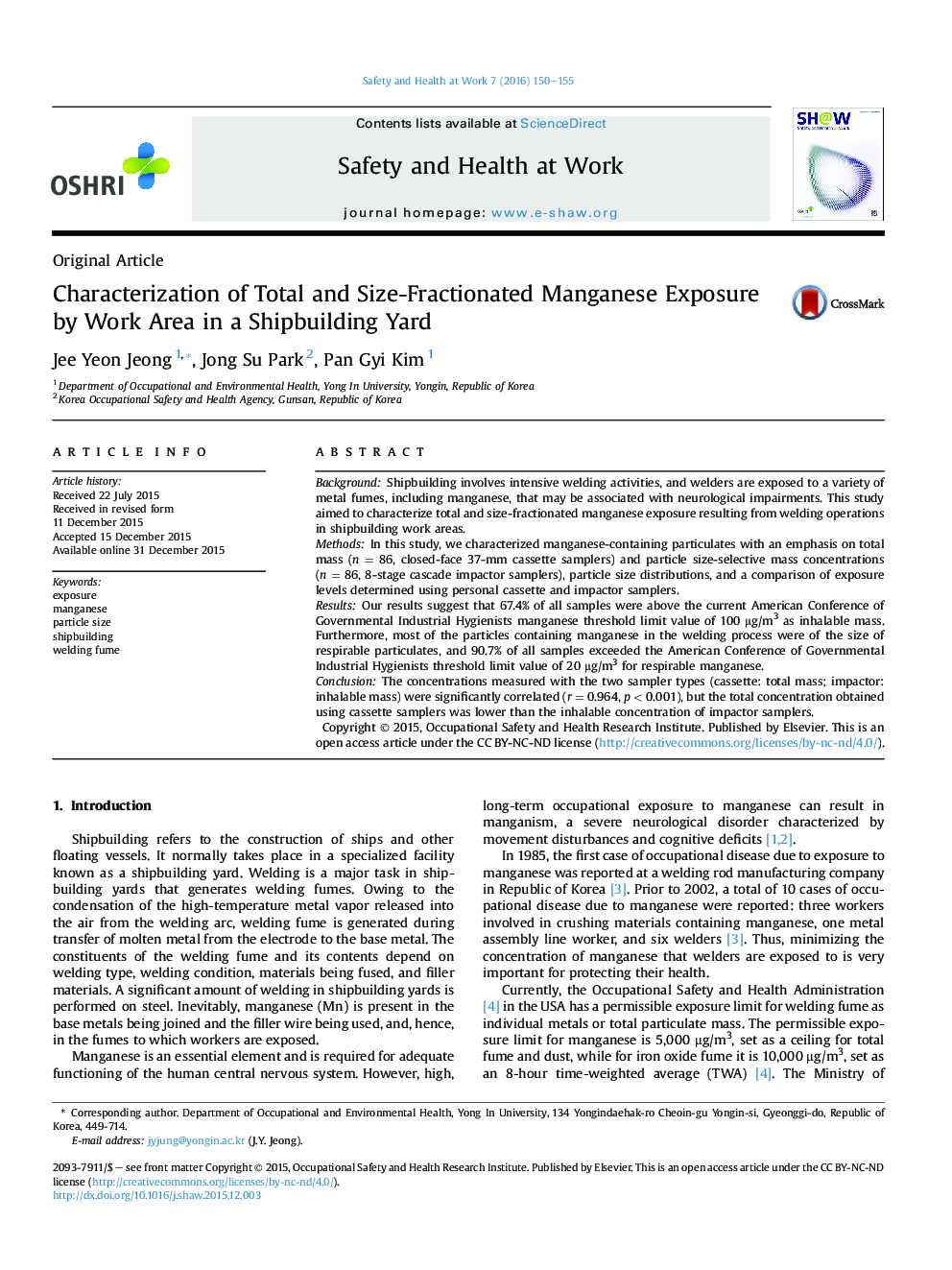| Article ID | Journal | Published Year | Pages | File Type |
|---|---|---|---|---|
| 1092023 | Safety and Health at Work | 2016 | 6 Pages |
BackgroundShipbuilding involves intensive welding activities, and welders are exposed to a variety of metal fumes, including manganese, that may be associated with neurological impairments. This study aimed to characterize total and size-fractionated manganese exposure resulting from welding operations in shipbuilding work areas.MethodsIn this study, we characterized manganese-containing particulates with an emphasis on total mass (n = 86, closed-face 37-mm cassette samplers) and particle size-selective mass concentrations (n = 86, 8-stage cascade impactor samplers), particle size distributions, and a comparison of exposure levels determined using personal cassette and impactor samplers.ResultsOur results suggest that 67.4% of all samples were above the current American Conference of Governmental Industrial Hygienists manganese threshold limit value of 100 μg/m3 as inhalable mass. Furthermore, most of the particles containing manganese in the welding process were of the size of respirable particulates, and 90.7% of all samples exceeded the American Conference of Governmental Industrial Hygienists threshold limit value of 20 μg/m3 for respirable manganese.ConclusionThe concentrations measured with the two sampler types (cassette: total mass; impactor: inhalable mass) were significantly correlated (r = 0.964, p < 0.001), but the total concentration obtained using cassette samplers was lower than the inhalable concentration of impactor samplers.
